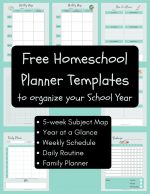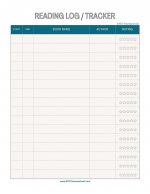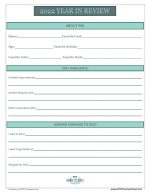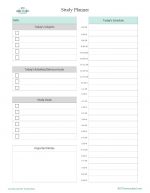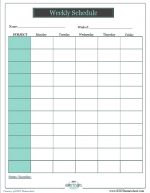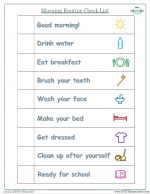
009.
Schedules, Routines & Rhythms
What’s the difference between schedules, routines & rhythms?
How do I organize the day?
What are some different planning methods?
Tune in this week while we discuss these topics and more!

Episode 009:
TWO WAYS TO LISTEN TO THIS EPISODE:
1. Click PLAY Button Above ^^ to listen here.
2. OR Listen on your favorite podcast platform:
Scroll down for 5 FREEBIES this week!
Brand New to Homeschooling?
GETTING START PAGE >>
Kindergarten Page >>
High School Series >>
Show Notes:
Like many adults, children thrive with a predictable routine and it helps them develop self-discipline. They like to know what happens next. But there is no reason structure has to be oppressive. Routines make life easier. There are no two homeschool days that are going to be exactly alike and whatever you plan, it will often not go exactly as planned. So set yourself up for success by choosing the method that will work best for you and continuing to be flexible and reevaluate over time. What works for a certain season of life, may not later.
What’s the difference between schedules, routines, and rythms? (3:06)
BTDT Homeshool Lesson Planner & Ultimate Organizer is an essential tool for every homeschooling family! This 187-page planner is all about tailoring it to your unique needs and making your homeschooling journey a breeze.
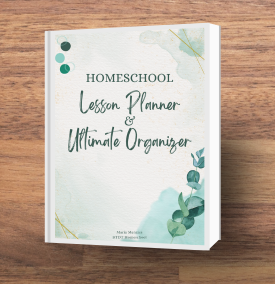
Schedules, for many, impliesa implies a rigid system of structured start and end times. When it comes to homeschooling, perhaps this also means adhering to a standard 180 day school year (two 18 week semesters, 36 week school year).
A lot of newer homeschool parents get really ambitious with these, often scheduling out every hour of the day. This can backfire or be hard to stick to.
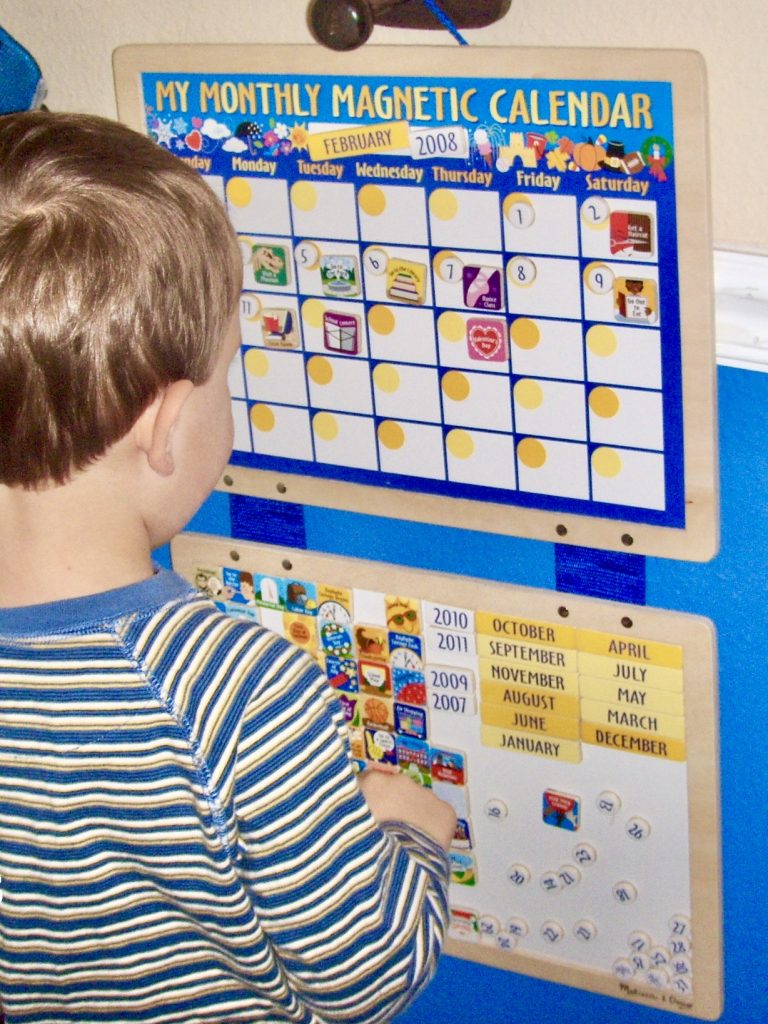
Routines have less structure to them but give a gentle pattern to your day. Perhaps you start each day with read aloud, then move on to math and other seat work, then work one on one with a younger child while an older one does some independent work, etc. Because a routine does not have the rigidity of a strict, time-based schedule, you do not need to feel the pressure of cramming, say a certain amount of problems into a set math time slot, you have the flexibility of reading aloud extra when you are in a good spot in a book, etc. Learn more about Planning Your Homeschool Year.
Rhythms are even more unstructured and may take into account *all* your daily activities- chores, meal prep, meals, hygiene, rest and bed times. Make a list of everything you do- this is an especially great type of plan to have with babies, toddlers, preschoolers.
How do I organize my day? (5:23)
What is a typical homeschool schedule?
Some states may have an outlined number of hours for daily homeschooling but your typical homeschool day may run for two or three hours. Homeschoolers also may not do 5 days a week- we often did 4 with a co-op or field trip day.
With your attention only directed to your child, you save more time than when attending to 20+ learners. To help you overcome the challenges of your weekly daily schedules, these points could help.
Be flexible
Learning should be fun and you might need to adjust whenever necessary to fit into the day’s need and challenges because each day brings its trouble. Flexibility could include things like changing your starting time, interchanging subjects, delaying some subjects, and so on.

Check out our 7 Steps to Choosing Curriculum
Be routine minded
Following hard rock schedules will bring frustration at some point or the other. Instead of wearing yourself out with schedules, be routine mined, and follow routine patterns that can always be adjusted to fit into the current circumstance.
Have every child in mind
When planning your schedules, consider every child in your home, and bring them onboard smoothly and systematically. You may give time to your younger children first, followed by the older ones.
Have allowances
In your weekly homeschool schedule, be flexible and allow time for unforeseen situations.
Getting to the actual schoolwork part of your day
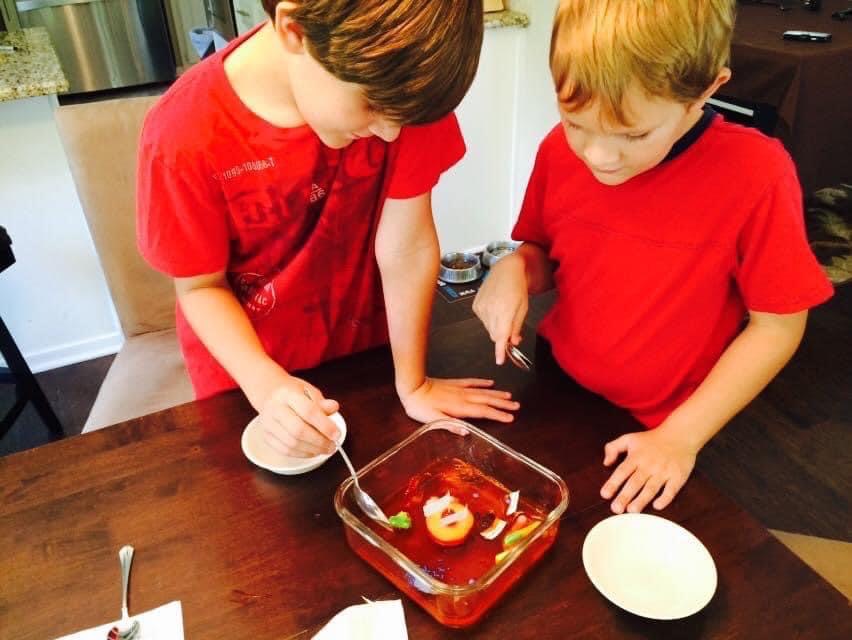
Be Prepared
I learned early on that the more organized and prepared I was, the better our days would flow. If I slept in and tried to wing it, it was always a more stressful day.
If I was running around looking for paper, pencils, or that scrap of paper I jotted down an idea on for science that day, my kids would lose interest or just disappear from the table altogether.
Do yourself a favor and spend some time preparing in the evening before– Spend 10 minutes looking over what you’re doing the next day to gather your materials and make any copies necessary.
I like to also sit down on Sundays and work on my “Blueprint for a Beautiful Week”. I plan out what we are doing for lessons/classes/activities, as well as meal plan and insert our household chores and any big errands we need to squeeze in.
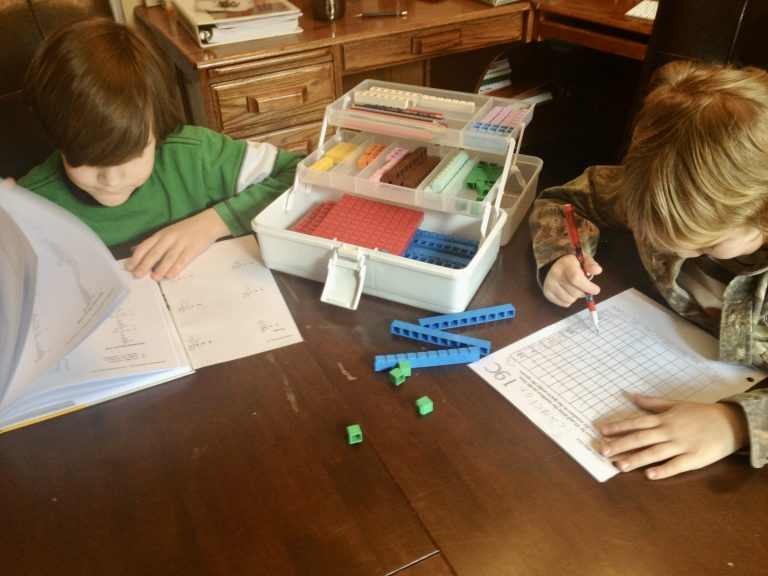
Check out our favorite Math Games
Make it Fun
Children respond well to fun and games. Create games out of tasks that seem too boring or unstimulating to them. Also make it a point to include fun activities in their routine e.g. playtime. Get your FREE Boardgame Templates to help teach any concept (reading, math, social studies, and more!)
Make it magical
Simple things like lighting a candle at the beginning of read aloud, or having fancy writing implements can take the drudgery out of the things you need to get done.
We loved these Peggy Kaye books and HIGHLY recommend them!
Check them out:
Games for Math: Playful Ways to Help Your Child Learn Math, From Kindergarten to Third Grade

Games for Reading: Playful Ways to Help Your Child Read

Games for Writing: Playful Ways to Help Your Child Learn to Write

Let Them Have Some Say
By letting your kids have a say in some things they do or in what order they do them, they will be more cooperative and invested in their learning.
Social Time & Outside Classes/Events
To figure out how your routine will go on inside your home each week, you will need to start with what happens outside your home!
When my kids were younger, we would usually structure our school around social activities happening. If there was a field trip at 10 AM, then we would do a school when we got home. If there’s an afternoon park day, we would be sure to school in the morning.
I’ve always done more outside classes as my kids got older, so a lot of what we did was arranged around those classes. When they were young, we did a park day every Tuesday and Friday morning, hike every Wednesday morning and Board game club every Friday afternoon. Those regular meet ups were not only fun memories for my kids, but they were also for my sanity as well!
Those regular meet ups were not only fun memories for my kids, they were my sanity
- Hike every Wednesday morning
- Board game club every Friday afternoon
- Field Trips were a great additon to our learning
Choose the kind of schedule/routine/rhythm that works best for you
Life happens and we are constantly thrown off that schedule.
Don’t try to do every subject every day
Feel free to alternate days or choose an alternative scheduling method. Everything needs to be done regularly— not daily.
You are never going to squeeze 4 hours of schoolwork into a 4 hours. Something is going to happen — the washing machine will flood, the dog runs out the front door or someone decides this is the day for math tears. You will most likely not get it done, and you will end up frustrated. Plan to do 2 hours of school in a 4 hour tmeslot.
Want to be sure something gets done each day? Then add it on to one of the natural breaks of your day. A natural break is a meal (we all eat) or naptime or a nursing session, etc. Use these set times of things you know you will be doing certain things for important parts of your schedule — reading aloud, math, memory work, art. Move right from your natural break into your subject and soon it will become a habit. Check out our Favorite Books for New Readers.
Short Lessons to Help Stay on Task
The idea of short lessons stems from the Charlotte Mason philosophy. Your child can focus and learn more if you keep the lessons short and end them BEFORE he tires, even though he’s spending less time on his schoolwork.
When my kids struggle with math, I just have them do a few problems, and then we pop over to reading a chapter and then back to math. Or for my musician, have him go practice for 15 minutes and then come back.
Schedule the siblings
Ironically, the most important part of your schedule is probably where there is no school at all. When sitting to plan your routine, the infant to preschool set should probably be considered first, as this will help to create a routine that will run smoothly. Some ideas:

If baby wants to eat every morning at [8:00], then that is a great time to read aloud to the other kids. I kept a book basket next to my nursing spot. Since we know reading aloud is important up until your older children leave the home, gather everyone together and enjoy this time. Little ones can play on the floor and everyone can find something to do with their hands. If you can’t read and nurse at the same time due to a wiggly older baby then pop in an audiobook or allow an older sibling to read. In fact, nursing time is also a great time for mom to be read to, so schedule time for reading aloud for emerging readers during nursing time as well. Get Daily FREE Homeschool Resources INSTANTLY on our Facebook group. These resources are a collection from all over the world and we recently posted a FREE morning basket planner we found online.
You can also make toddler care and entertainment part of the bigger kids’ school time. While you work with one, the other’s required task can be to play with little brother or sister and see to their needs for an allotted amount of time.

My kids liked to teach baby sister finger plays and rhymes and we really enjoyed this book:
The Book of Finger Plays & Action Songs (First Steps in Music series)

Filling the younger siblings bucket with this book:
Fill a Bucket: A Guide to Daily Happiness for Young Children

* Put preschoolers first. Often a little one-on-one attention from mom goes a long way towards the little one going off to play alone happily for a while. Schedule in story time and a fun activity for your twos, threes, and fours before you get started with the bigger kids. Fill their cup!
* Utilize the nap time. School does not have to start early in the morning. If you have two or three young kids and one or more of them still take a long afternoon nap, then don’t start school until the little ones go down. School can go from 1-3 and can be done peacefully and with less frustration. Schedule the messiest, hardest, or most mom-consuming subjects for nap time. Even for small children who no longer nap, scheduling a mandatory rest time can be a great way to make your day run smoother and keep everyone happy.
Follow your natural inclinations
If your family does not jump out of bed running in the morning, then resist scheduling an early start to your day. Enjoy the flexibility of homeschooling and work at your times of peak productivity. This also means taking into consideration your children’s natural schedule and the fact that they have variations (which may not match yours!) as well. Got one early riser? Schedule his or her independent work first. Let the others get up right before group time and then do their independent work after.
Do not try to change your life and adapt it around your schedule
That’s a prescription for disaster. First, it’s important to have an understanding of your family’s natural habits. You don’t want to choose a schedule that starts at 7 AM if your kids thrive when they sleep in. Try letting your child do school in the afternoon or evening if he seems to be more alert and functions better. He may be a different student. There is NO law saying school has to start at 8 am! In fact, there’s no law that says it has to be done Monday through Friday.

Traditions:
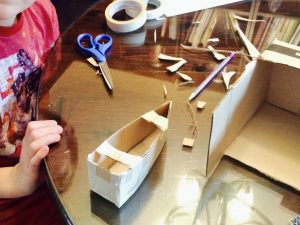
Make sure to include lots of traditions into your schedule or routine. It gives everyone something to look forward to and makes for happy family memories.
Here’s some ideas of traditions that we both did:
- Starting back after a holiday break FREEBIE!
- First Day of School Year
- Birthday on school day
- Hike & Pie
- Saint Patrick’s day hunt
- MLK day
- Shakespeare in the park
- Dog birthday party
- Homeschool days at different places in town for variety
- Cardboard boat Regatta

What are some different planning methods?
Workboxes, Block and Loop Scheduling
Check out the workboxes we used:
(Perfect for little ones)

Loop scheduling doesn’t assign a particular subject to a certain day, but you may have a list of work you do during a certain time period, and when it’s time to work, you just move to the next thing on the list. A day off for an emergency car repair does not derail.
Block scheduling is for when you may want to devote more time to a certain subject. So you give it a dedicated time period, like several weeks or a semester- this allows you to stay focused and move through material faster. This is great for elective type classes, but also work with things like science/history. Math and language arts are typically subjects you want to include every day. Block scheduling might look more like a college or high school schedule.
Workboxing is another cool planning tool that was all the rage for a while. It involved using a set of boxes/folders/shelves that a child would work through every day. Some would include independent work, some might have “work with mom” or “work with sibling” slots. I loved these- I had 10 drawers, 5 were everyday tasks and the other 5, I switched out, but I had a master weekly schedule, so it was super easy to load the boxes up at night.


